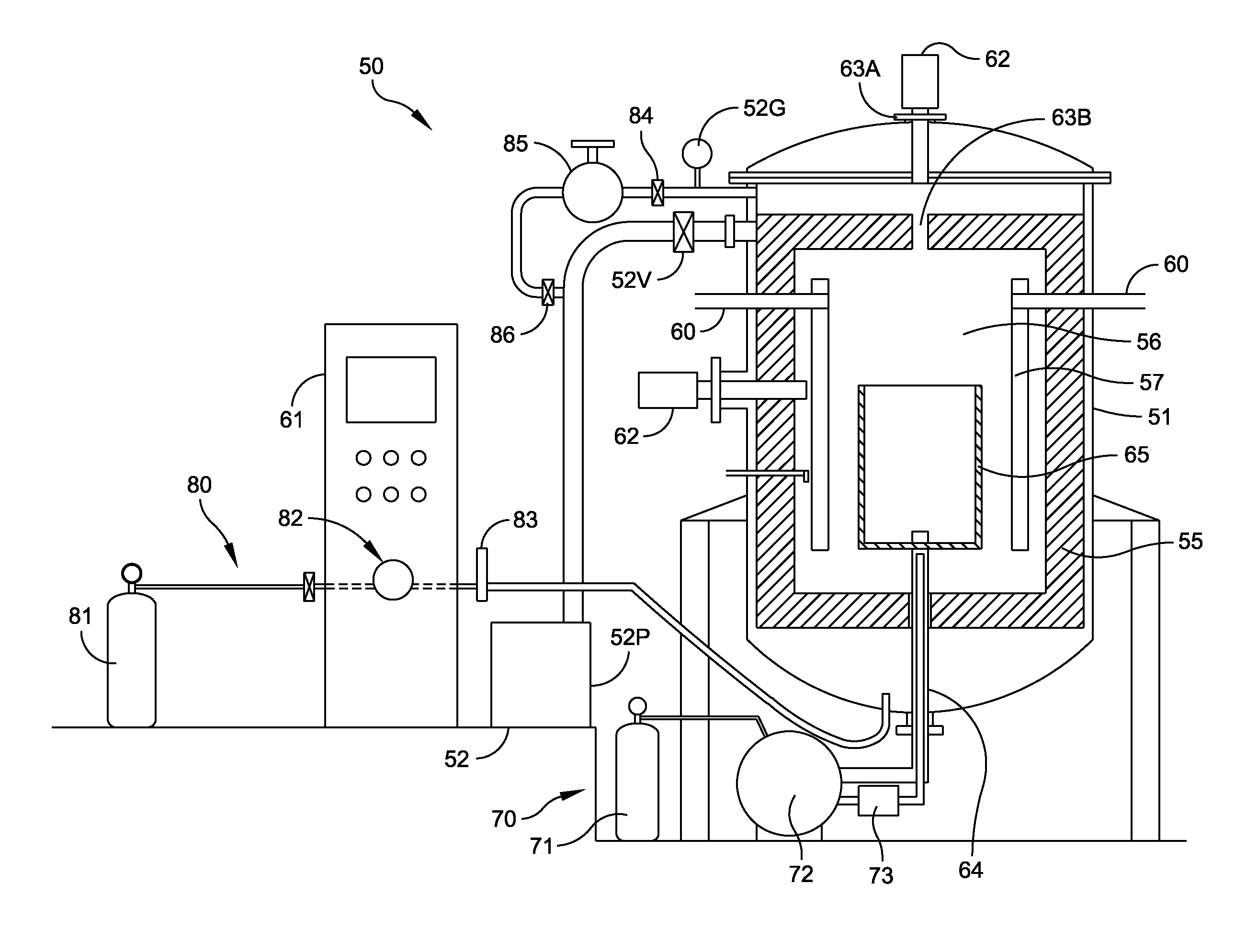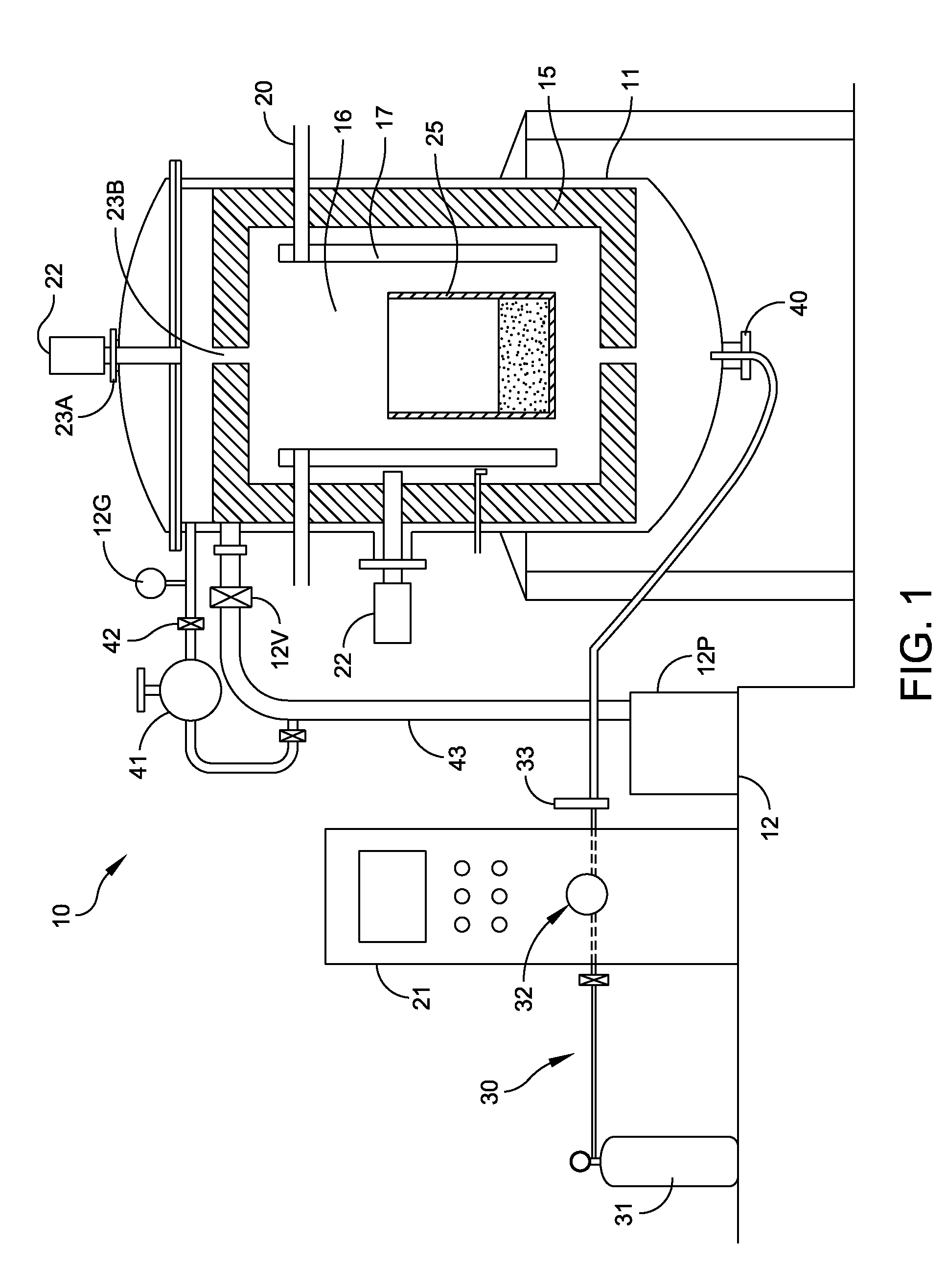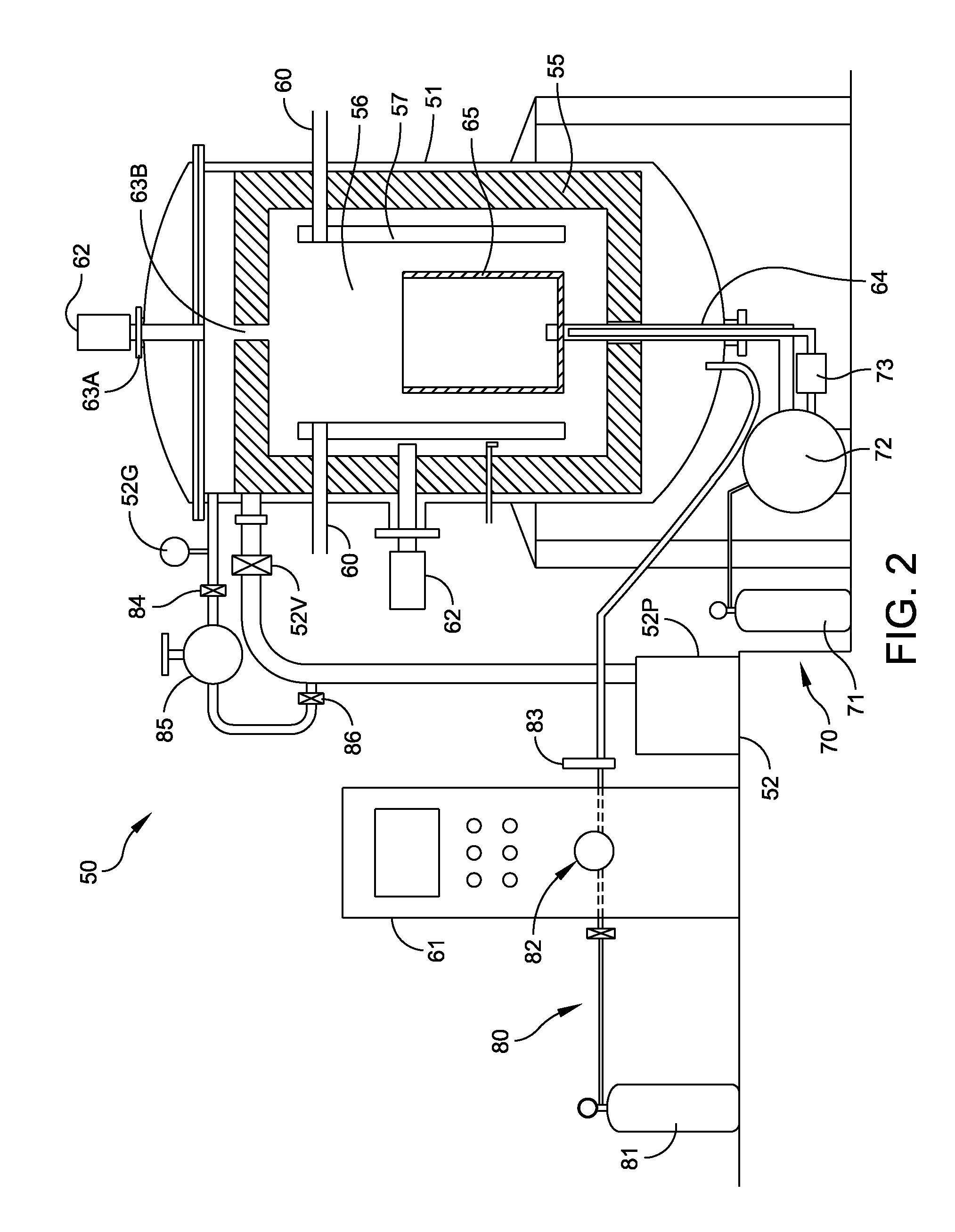High-Temperature Process Improvements Using Helium Under Regulated Pressure
a technology of helium and helium, which is applied in the direction of crystal growth process, polycrystalline material growth, chemistry apparatus and processes, etc., can solve the problems of reducing the specific heat of the furnace, affecting the quality of the silicon grown from the melt, etc., to achieve high heat conductivity and high specific heat
- Summary
- Abstract
- Description
- Claims
- Application Information
AI Technical Summary
Benefits of technology
Problems solved by technology
Method used
Image
Examples
example
[0067]FIG. 7 is a cross-section along the C-axis of the boule produced using the process of FIG. 6. The lined area represents that portion of the boule that met the minimum lattice distortion and scatter site specifications and therefore could be used could be used in the manufacture of light-emitting diodes. There is a significant increase in the useful volume over that shown in FIGS. 4 and 5. Moreover the useful volume in this boule exceeded both the lattice distortion and scatter site requirements. The cycle time for this improved product was about the same as the cycle time for the process run of FIG. 4.
[0068]From experience it is known that different furnaces may have different characteristics. Certain of those characteristics can result in changes during the growth stage and can adversely impact the quality of the final crystal. When it is determined that such conditions exist and could be overcome by modifying the constant nature of the heat transfer during the growth stage, ...
PUM
| Property | Measurement | Unit |
|---|---|---|
| pressure | aaaaa | aaaaa |
| pressure | aaaaa | aaaaa |
| pressure | aaaaa | aaaaa |
Abstract
Description
Claims
Application Information
 Login to View More
Login to View More - R&D
- Intellectual Property
- Life Sciences
- Materials
- Tech Scout
- Unparalleled Data Quality
- Higher Quality Content
- 60% Fewer Hallucinations
Browse by: Latest US Patents, China's latest patents, Technical Efficacy Thesaurus, Application Domain, Technology Topic, Popular Technical Reports.
© 2025 PatSnap. All rights reserved.Legal|Privacy policy|Modern Slavery Act Transparency Statement|Sitemap|About US| Contact US: help@patsnap.com



